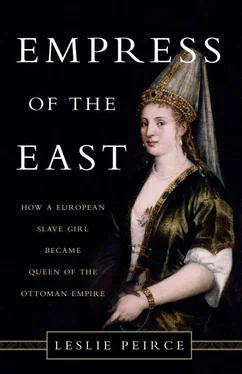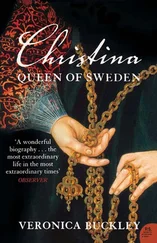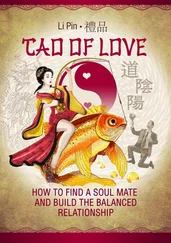Second in rank only to Hafsa among royal women were the concubine mothers of Suleyman’s children. They were likely the objects of Roxelana’s keenest interest, for she surely hoped to join their number. One of the duties—and pleasures—of a prince was to populate a new dynastic generation. When Suleyman first encountered Roxelana, he already had four children. Mahmud was eight years old at his father’s accession, Mustafa was five, and their brother Murad an infant. They also had a sister, whose birth date and name (perhaps Raziye) are uncertain. [13] Uluçay, Padişahların kadınları , 39.
With the possible exception of Mahmud, they and any others who had not survived infancy were born to Suleyman in Manisa.
Mahmud, Mustafa, and Murad each had a different mother, as the Ottoman politics of reproduction demanded. The rationale was that each heir presumptive deserved his mother’s undivided attention as coach and partisan in his future candidacy for the throne. As for Suleyman’s daughter, she may have shared a mother with one of the boys, since there was no limit to the number of female children a concubine might bear before the birth of a son put an end to her sexual relationship with the sultan.
If princes were the lifeblood of the Ottoman sultanate, princesses were loved specially. Unlike their brothers, they could never rival their father for popularity and prestige. And like their counterparts around the world, they were useful for the political alliances their marriages consolidated. A vigorous producer of sons, Suleyman may well have wished for more daughters, for only one, Mihrumah, would survive to adulthood. Later in life the sultan seemed to compensate by devoting a great deal of attention to his granddaughters’ engagements and weddings.
The concubine mothers of the four children were already acquainted with one another from their time in Manisa. A government in miniature, Suleyman’s princely household included family, servants, teachers, cooks, courtiers, bookkeepers, soldiers and officers, and the myriad other personnel who composed the entourage of an heir to the throne. Except for a basic staff and military guard that remained in the Manisa palace, his court moved with him to the capital. Once in Istanbul, the sexes separated, men to the New Palace, women to the Old Palace, eunuchs to both. There their numbers expanded, as new slaves arrived to fill out the two royal residences. The mothers of Suleyman’s children doubtless wondered which, if any, of the new female recruits might rise to their own status.
Among this small elite was Mahidevran, who had traveled from Manisa with her son Mustafa. When tragedy struck in October 1521, taking the toddler Murad and then Mahmud and his sister, apparently the victims of an epidemic, Mahidevran’s stature rose. Only Hafsa outranked her. But with the birth of a new baby boy of her own in the fall of 1521, Roxelana became Mahidevran’s rival for the sultan’s attention. At least for the moment—there was the possibility, even the likelihood, that Suleyman would answer the sudden need to produce more princes with new concubines.
AS ROXELANA’S FORTUNES rose from slave to concubine to royal mother, she almost certainly encountered one or more of the sultan’s six sisters. By the time she arrived in the Old Palace, all the sisters had been married. Since the reign of Suleyman’s grandfather, it had been Ottoman practice to give princesses in marriage to the sultan’s top statesmen. These were the pashas who served alternately as military commanders and governors of Ottoman provinces and ultimately, if their work was exemplary, as viziers and members of the Imperial Council through which the sultan ran his empire. These royal sons-in-law were nearly all products of the New Palace training regime or its smaller-scale replica in a prince’s household. Most had begun their career as a personal attendant to the sultan or one of his sons.
The rich households formed by the union of a princess and a statesman functioned as satellites of the great dynastic establishment in the capital. A princess could live at quite a distance from Istanbul if her husband were dispatched to govern a frontier region. His periodic summons to the capital, however, provided opportunity for his wife to visit home and show off her children. The festive receptions that greeted her were doubtless welcome breaks in the daily routine of the palace. To the Old Palace family, princesses were beloved daughters, sisters, and aunts. They were also surely objects of pride and affection for the female staff and eunuchs who had helped raise them.
Less joyful were the reunions that took place when a widowed princess returned with her children to the Old Palace. Widowhood was a stark liability of marriage to a pasha, who might be considerably older than his bride. Moreover, he ran the risk of death in battle. But a widow’s stay in the Old Palace might be short-lived if she was still of marriageable age, for she could be given to another pasha, subjecting her all over again to the same uncertainties. A second marriage could work out well though, as it did for Suleyman’s granddaughter Shah Sultan. After the death of her first husband, she married one Zal Mahmud at the age of thirty. So suited were husband and wife, it was said, that they fell ill simultaneously, lay together in their deathbed, and expired at the very same moment.
The gravest risk for a princess was that her husband might be found guilty of violating the empire’s laws, which was tantamount to betraying his monarch. Execution was the punishment, the sentence of death the sultan’s to give. Suleyman’s sister Beyhan was so outraged when he ordered the beheading of her husband Ferhad Pasha that she not only refused to remarry but chose to live in self-exile away from Istanbul. Accused of rapacious and bloody conduct as a governor in eastern Anatolia, Ferhad had already received a second chance through Hafsa’s and Beyhan’s pleas. Reports of repeated abuses in his new post on the Danube, however, sealed his fate. [14] Alberi, Relazioni , 3:108.
The Venetian ambassador Bragadin reported that Hafsa was greatly grieved by the execution, no doubt out of concern for Beyhan and her children. [15] Ibid., 3:108.
Thought by some to have been Beyhan’s mother, Hafsa was surely torn between the princess’s anguish and a queen mother’s recognition of the need for justice, lest her son be perceived as weak or negligent. A reality of Ottoman rule—that policy and security trumped family bonds—was no less brutal for being shared with other sixteenth-century monarchies, such as that of England’s Henry VIII or Muscovy’s Ivan IV, “the Terrible.”
Roxelana was doubtless privy to the news of Ferhad’s demise and perhaps witness to Beyhan’s angry grief. By 1524, the year Ferhad was executed, she had become a figure of importance in the Old Palace. Once Suleyman had bedded his new concubine, sometime in the first half year of his reign, she became gözde , “in the eye of the sultan,” someone of account. Her presence at the various receptions and entertainments sponsored by ranking women of the palace was now expected, and soon she would be responsible for providing such amenities in her own suite of rooms for her growing circle of attendants and allies.
News from Istanbul and beyond passed from ear to ear in the Old Palace, as did local harem gossip, but formal gatherings were venues where certain kinds of information—the Ottoman victory over the Hungarians, the rupture between Beyhan and Suleyman—could be relayed to those who needed to know. As she rose from gözde to concubine mother of one, two, and then more children, Roxelana rapidly became one of the “need to know” elite. The Old Palace was hardly sealed off from politics, as modern stereotypes of royal harems so often presume. It was politics, and it taught politics. Foreign envoys were wholly correct to consider the harem a vital object of diplomatic intelligence, for it generated its own news and even its own scandals.
Читать дальше












